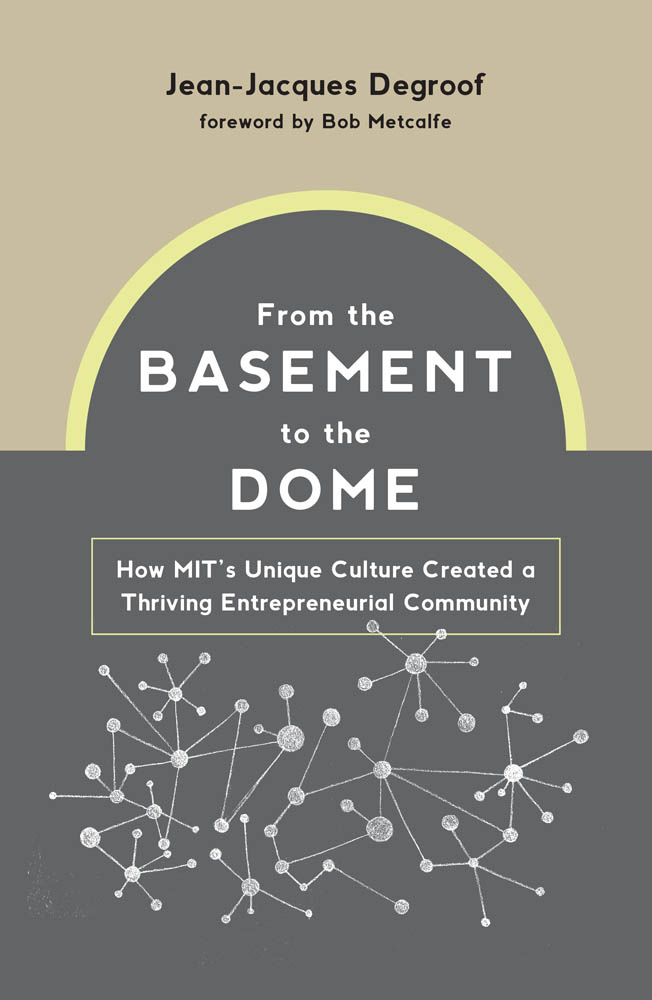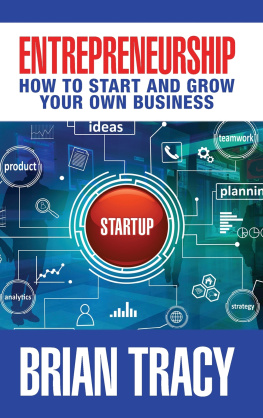Contents
Guide
Pagebreaks of the print version

FROM THE BASEMENT TO THE DOME
HOW MITS UNIQUE CULTURE CREATED A THRIVING ENTREPRENEURIAL COMMUNITY
JEAN-JACQUES DEGROOF
FOREWORD BY BOB METCALFE
The MIT Press
Cambridge, Massachusetts
London, England
2021 Massachusetts Institute of Technology
All rights reserved. No part of this book may be reproduced in any form by any electronic or mechanical means (including photocopying, recording, or information storage and retrieval) without permission in writing from the publisher.
The MIT Press would like to thank the anonymous peer reviewers who provided comments on drafts of this book. The generous work of academic experts is essential for establishing the authority and quality of our publications. We acknowledge with gratitude the contributions of these otherwise uncredited readers.
Library of Congress Cataloging-in-Publication Data
Names: Degroof, Jean-Jacques, author.
Title: From the basement to the dome : how MITs unique culture created a thriving entrepreneurial community / Jean-Jacques Degroof.
Description: Cambridge : The MIT Press, [2021] | Includes bibliographical references and index.
Identifiers: LCCN 2020050490 | ISBN 9780262046152 (Hardcover)
Subjects: LCSH: Entrepreneurship--Massachusetts. | Massachusetts Institute of Technology. | Corporate culture--Massachusetts. | New business enterprises--Massachusetts.
Classification: LCC HB615 .D436 2021 | DDC 338/.0409744--dc23
LC record available at https://lccn.loc.gov/2020050490
d_r0
To my wife, Valeria. And to our niece and nephew, Valeria and Mximo.
CONTENTS
List of Figures
Estimate of resources supporting entrepreneurship in 2019 (N = 145).
*2019 Annual ReportMartin Trust Center for MIT Entrepreneurship (Cambridge, MA: MIT, 2019), https://entrepreneurship.mit.edu/annual-report/ (accessed November 15, 2019).
Estimate of initiatives supporting entrepreneurship over ten-year periods (excluding classes) (N = 109). Includes known sources of support that have been discontinued.
Estimate of growth in the entrepreneurship course offerings (19902019). The data starts in 1990 because earlier data is less relevant (only one course was offered between 1961 and 1993).
Source: MIT Course Catalog (MIT Bulletin) 199020102011. Annual Report of the Trust Center for MIT Entrepreneurship 20152016 and 20192020.
Estimated number of companies founded by MIT alumni, by founding decade, pre-1960s through April 2014.
Source: Edward B. Roberts, Fiona Murray, and J. Daniel Kim, Entrepreneurship and Innovation at MIT: Continuing Global Growth and Impact, MIT Sloan School of Management, 2015, http://web.mit.edu/innovate/entrepreneurship2015.pdf (accessed February 2, 2020), 14. The authors specified that they normalized the figures in order to address differences in the size of the alumni base over time. They divided the number of companies founded by MIT alumni in each decade by the number of existing alumni in that decade.
Estimated sources of support for entrepreneurship (excluding classes) (19462019) (N = 109). This includes known sources of support that have been discontinued.
Estimated generalist modes of support of entrepreneurship, as opposed to specialist modes (19462019) (N = 109). This includes known sources of support that have been discontinued.
Estimate of the growth of social entrepreneurship (19462019) (N = 109). This includes known sources of support that have been discontinued.
The gradual path of the student experience at the Trust Center.
Source: 2018 Annual ReportMartin Trust Center for MIT Entrepreneurship (Cambridge, MA: MIT, 2018), http://entrepreneurship.mit.edu/annual-report/ (accessed July 20, 2018), 29.
The MIT entrepreneurial ecosystem for student entrepreneurship.
Source: Trust Center for MIT Entrepreneurship.
Number of MIT spin-offs started by fiscal year 20092018.
Source: MIT TLO, An MIT Inventors Guide to Startups for Faculty and Students (Cambridge, MA: MIT, 2010), http://web.mit.edu/tlo/documents/MIT-TLO-startup-guide.pdf (accessed November 3, 2019).
Entrepreneurship courses offered in 20192020.
Source: 2020 Annual ReportMartin Trust Center for MIT Entrepreneurship (Cambridge, MA: MIT, 2020), http://entrepreneurship.mit.edu/annual-report/ (accessed December 14, 2020), 6.
SME versus IDE entrepreneurship.
Source: William Aulet and Fiona E. Murray, A Tale of Two Entrepreneurs: Understanding Differences in the Types of Entrepreneurship in the Economy, in SSRN Electronic Journal, 2013, https://doi.org/10.2139/ssrn.2259740 (accessed December 14, 2020).
List of Tables
Growth of the Entrepreneurship Centers activities 19961998
. Estimate of Student-Led Initiatives Supporting Entrepreneurship (20062020)
. Estimate of The Institutional Response to Growing Interest in Entrepreneurship (20062020)
. List of Industry- or PRofessional-Specific Support for Entrepreneurship (20062020)
. Support for Social Entrepreneurship
. List of Active Extracurricular Support Structures Designed to Build Extracurricular Entrepreneurial Skills as of 2020
. List of Active Contests and Prizes as of 2020
. List of Active Networking, Community-, and Career-Building Resources as of 2020
. Course Offerings, 20192020
FOREWORD
When I arrived at MIT in 1964, it was not the entrepreneurial hotbed it is now. There were no dedicated classes or groups or formal initiatives. But the absence of the seething caldron of entrepreneurial activity that exists today does not mean that the ingredients for greatness were not already in place, simmering. As Jean-Jacques Degroof so astutely describes in this book, MITs founding principles and underlying cultural values were perfectly aligned with the entrepreneurial mindset.
I did not come to MIT with the goal of becoming an internet pioneer or founding my own companies. But through what Jean-Jacques refers to as serendipitous encounters and the freedom to explore interests beyond the standard curriculum, I invented the Ethernet and founded 3Com. My introduction to entrepreneurship at MIT occurred in my junior year, through a special undergraduate systems program at Sloan taught by Professor Jay W. Forrester. Through that class, I met Edward Roberts, who would go on to become a hugely influential figure in MIT entrepreneurship. Ed and I started studying start-ups, including Teradyne and DEC. Using what we learned, I founded three start-ups in that time: MSC, DCD, PDS, all of which were consulting companies. Though the companies did not survive my admission to grad school and other circumstances, the entrepreneurship bug was with me to stay.
How I came to invent the Ethernet and found the multibillion-dollar networking company 3Com has been well documented, as has my high-profile role as an internet pioneer. Now, as the Professor of Innovation and Entrepreneurship and Murchison Fellow of Free Enterprise in the Cockrell School of Engineering at the University of Texas at Austin, I am in the next phase of my entrepreneurial journey, working to advance the vibrant start-up ecosystem in Austin. The student is now an educator; the pioneer is now a mentor. My To-Do List consists of one main thing: recreate MIT.










